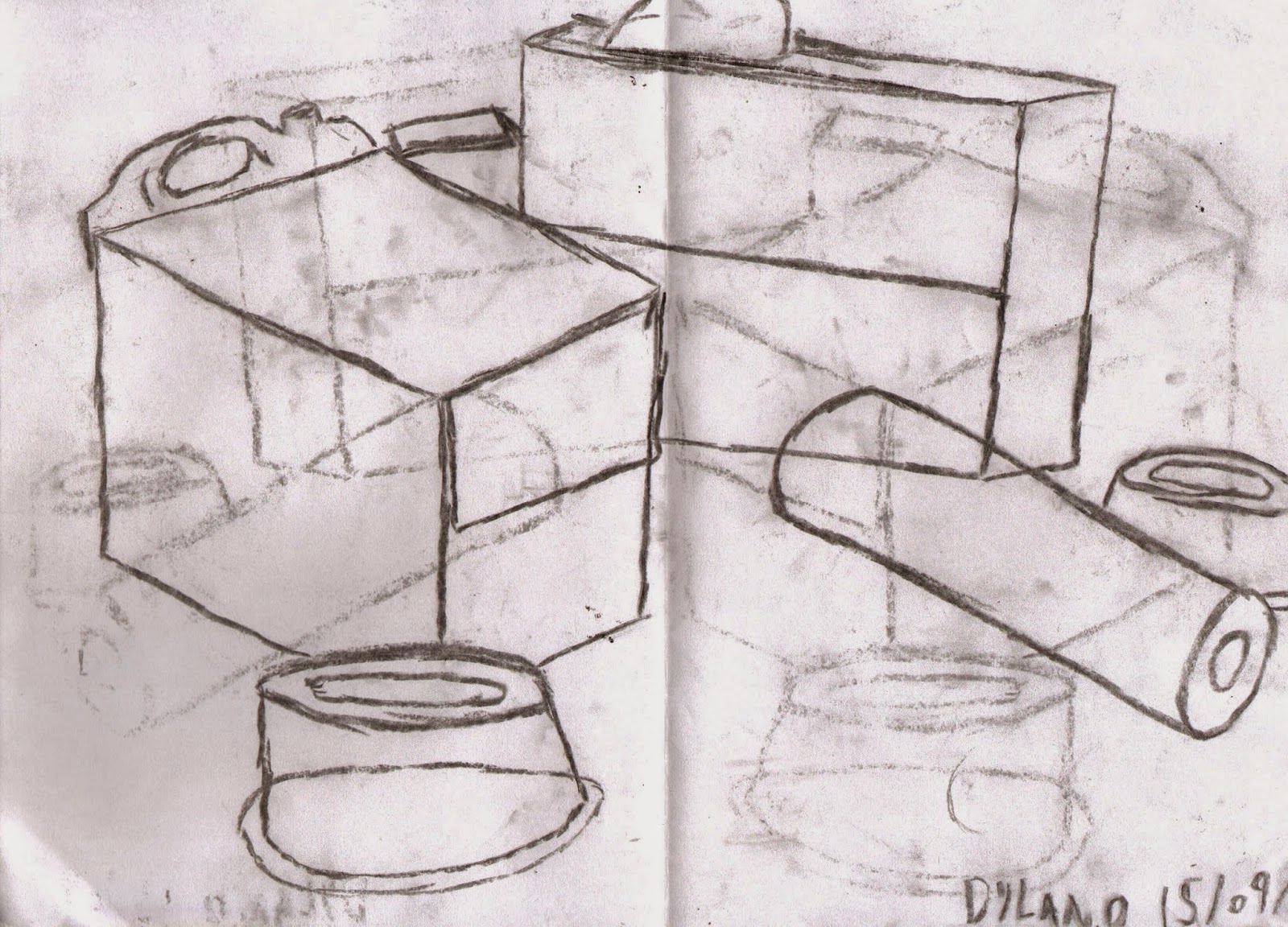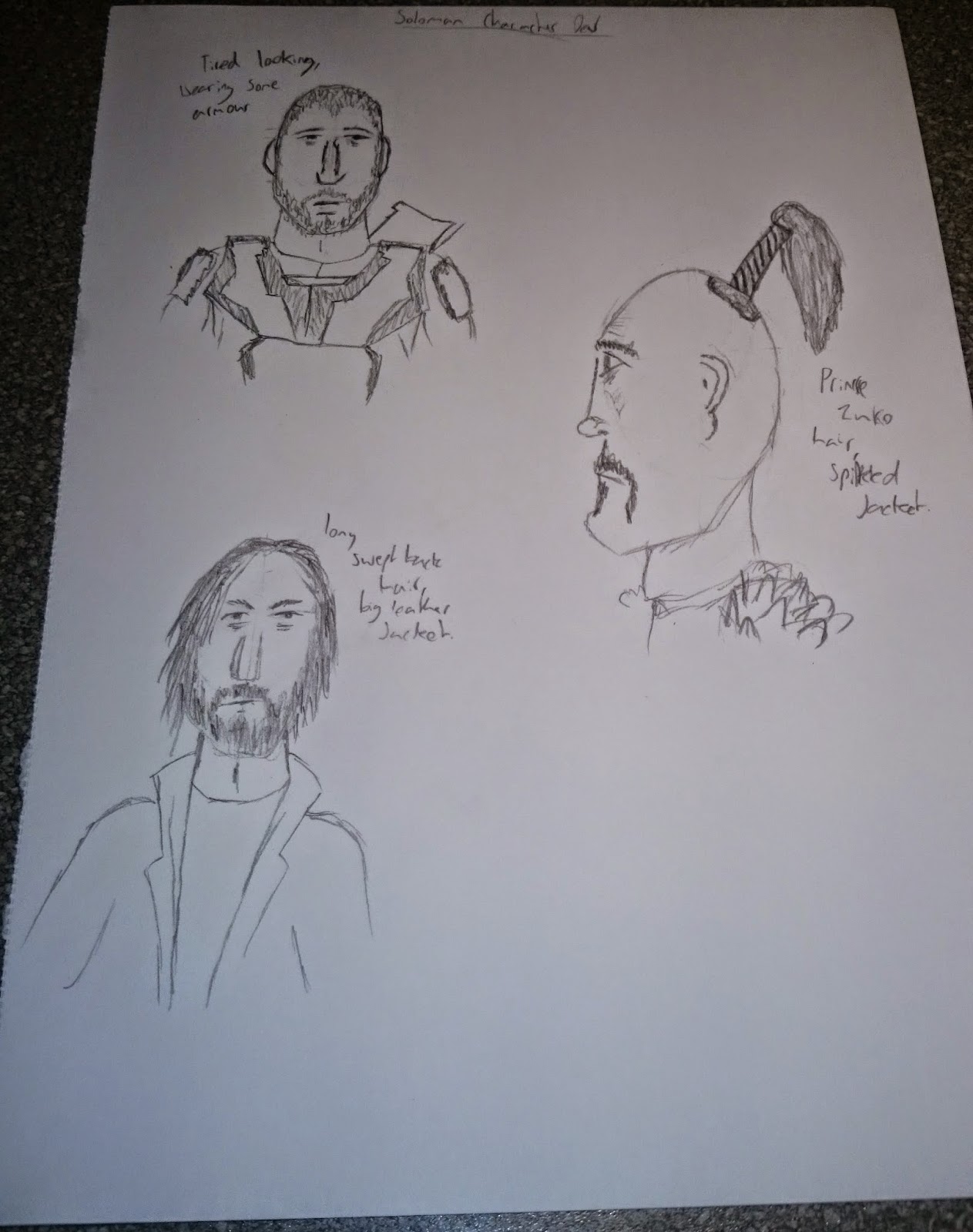PERSPECTIVE DRAWING
ONE POINT PERSPECTIVE
When drawing in one point perspective, everything you sketch on the page will link back to a single point, known as the vanishing point. |
| My first one point perspective drawing. It went alright but I found it really hard to get the sofa right. |
 |
| My second one point perspective drawing. This one went much better because the hallway was simpler to draw. |
 |
| My third one point perspective drawing of a kitchen. It mostly went well but certain parts of it look wrong like the window. |
TWO POINT PERSPECTIVE
Two point perspective drawing is similar to one point except that there are two vanishing points instead of one.
PERSPECTIVE DRAWINGS OF OBJECTS
Drawing in perspective is very important in games design, as you could come up with a great character or object design, but if it is to big or small it could ruin the whole image. so I got some practice drawing in perspective by drawing random assortments of objects.
 |
| I sketched a random assortment of boxes and bottles. The hardest part was the bottle handle and lid. To get it in perspective with the rest of the image and look good took a few attempts. |
 |
| This is the same as the drawing above except that I shaded all of the blank spaces in to make the objects clearer. |
DRAWING CLOTH
Cloth is very hard to draw as it creases a lot. It also settles into unusual shapes. These creases and shapes that cloth form make it very hard to draw, but it is a useful skill to have. So I tried to draw some cloth in the style of Albrect Durer, a German painter from the late 1400s.
 |
| My drawing of some cloth hanging. the hardest part was trying to draw the creases and the parts of the cloth that overlap. |
DRAWING PEOPLE
Probably one of the most important skills to have as a game designer is to be able to accurately draw people. while I have drawn people and characters that I have designed before, I will hopefully be able to learn some new techniques for drawing people.
PORTRAIT AND 3/4 FACES
One of the hardest things about drawing faces is getting the right proportions for all of the features. Its is also very hard to draw faces looking in any direction other than forward. So I got some practice by drawing one of my classmates faces and a character that I made up.
 |
| I am very happy with my portrait drawing as I think that I mostly got the proportions of his facial features right. However my 3/4 view drawing ended up looking a little strange. |
 |
| In this drawing, I was going through the process of making a cartoon style 3/4 face. The finished character looked a bit like Beethoven, so I made him look like a composer. |
THUMBNAIL SKETCHES
Next I got some practice drawing posture by drawing my classmates in different poses. I only drew them as frames as I wanted to focus on their stances.
 |
| This is the first sketch. It is alright except for the fact that I drew the hips and waist way too thin. |
 |
| This is another thumbnail drawing. It is of a person in a fighting stance with their back towards me. It didn't work out so well because it is hard to tell which way they are facing. |
 |
| This thumbnail drawing is of a person with their hands on their hips. I am happy with this sketch as I think I got the body proportions and the pose right. |
CONTINUOUS LINE DRAWING
When drawing continuous line drawings, you must try to keep the pencil on the paper for as long as you can. The drawing should only be made up of a few continued lines. My continued line drawings were of the same subject as my thumbnail drawings, classmates making poses.
CONCEPT ART
ARTIST RESEARCH
Chris Foss
Chris Foss began using air brushes In the
1960s and has now become one of the most recognised artists using this tool. He
has created cover art for over 1000 books, most of them sci fi, for
artists such as Isaac Asimov, E. E. Doc Smith and Arthur C. Clarke. He has also
worked in film design on films including Alien, Flash Gordon and recently Guardians
of the Galaxy.
The reason that I decided to research Chris Foss was because I am doing my concept art on a sci fi film about a bounty hunter. I specifically like his art work of spaceships and asteroid cities. I can use these images as inspiration for my own work as I had planned to have a lawless space station and a spaceship in my work.
H. R. Giger
Giger was a painter, sculptor and designer and is most famous for his work on the film Alien which won an academy award for best visual effects.
All of the images above are concepts for the film Alien. Although they are sci fi like Chris Foss' work they are very different from each other. While Foss' work is very colourful and large scale, Gigers work is much darker, and looks claustrophobic. I like the darkness of Gigers work as I plan to make my concepts quite dark and gritty as well. However im not that bothered with the alien architecture as I don't plan to have any Aliens in my work.
INITIAL IDEAS
MINDMAP
CHARACTER DEVELOPMENT
The concept art that I will produce is going to be about a bounty hunter and his robot side-kick. So I have developed different design ideas for both.
OBJECT DEVELOPMENT
The object that I am going to include in my concept art is going to be Solomans spaceship. I I wanted it to look old and rusty, but at the same time pretty cool, like the Millennium Falcon from Star Wars.
FINAL CONCEPTS
I have two final concepts. One of my characters and a location, and the other is of the object that I designed, Solomans spaceship.


















